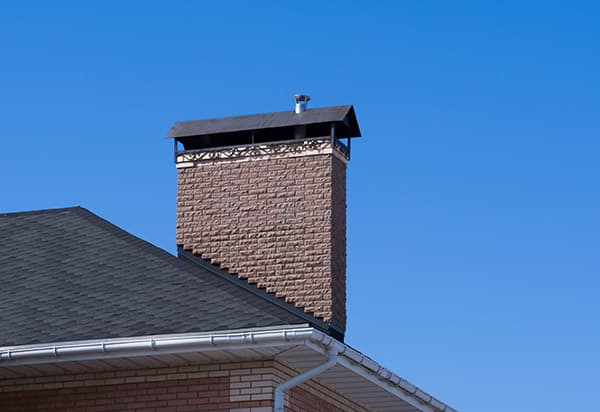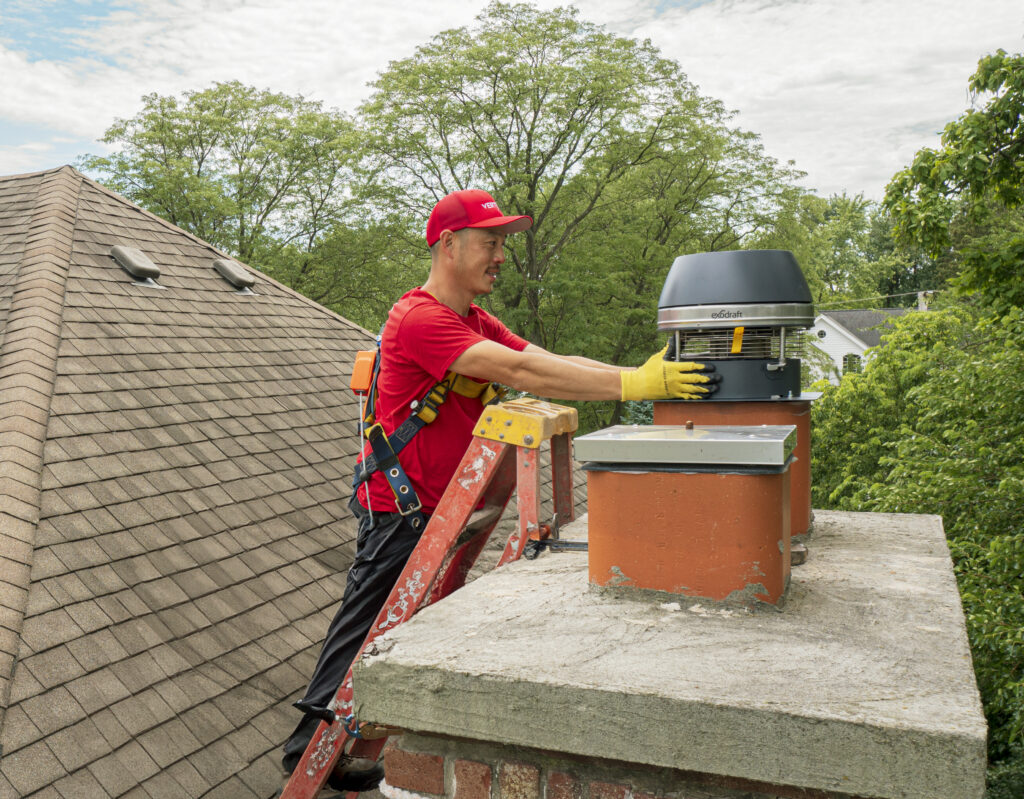
Fireplaces are a special commodity to have in a home. There aren't that many new homes built with one, so many home buyers look at older homes for a fireplace. If that is the case, or if you're a homeowner that has had one for years - have you ever considered a chimney relining?
Chimney relining can make your fireplace safe to use again. The flue or liner in the chimney deteriorates over time which then makes it hazardous to you and your family. Therefore, liners are essential to help channel heat and gasses that climb up the chimney. Furthermore, liners also help block the heat in the chimney from causing combustible materials that may catch fire.
Why is a chimney liner important?
It's a safety risk when a liner becomes cracked or crumbles. There are combustible materials in the chimney that can cause a fire. It can also allow heat and gas to escape in places of the house instead of going up and out of the house. Therefore, it's not only a safety hazard but also reduces the efficiency of your fireplace.
The lining is easily one of the most important parts of your chimney. Every year the fireplace should get inspected by a certified professional that will sweep as well as inspect the unit.
If the inspector notices crumbling or cracked lining, it’s time to get it relined. He or she can also refer you to where you can find a new flue as well as what types of chimney liners are available.
What is a Flue Liner?
When an inspector finds issues with the chimney they're often referring to the need to replace the flue liner. In old homes, there isn’t even a flue liner at all sometimes.
However, continuing to operate one without a liner goes against current regulations that have been put in place to keep families safe. Liners are required by the CSIA (Chimney Safety Institute of America) in order to prevent house fires and keep dangerous gasses from staying trapped in the rooms instead of traveling up the chimney.
The bottom line is if the home lacks a flue liner in the chimney, or it's dated and cracking - you need to get it replaced before using the fireplace again.
Functions of a Chimney Liner
Aside from stainless steel liners, all of them eventually deteriorate due to the extreme heat and pressure they endure when the fireplace is in operation. It is why homeowners are required to get their fireplace regularly inspected.
The liner serves three primary functions:
- The chimney liner prevents the transfer of heat to combustible components of the building that surround the chimney. There is one study that is often referenced by inspectors in which adjacent woodwork next to an unlined chimney sparked a fire in under four hours.
- The gases that are created by a burning fireplace are highly combustible and acidic. They can destroy the mortar in any given chimney. When mortar joints erode from heat the gasses are then gained access to other combustible materials. Furthermore, the gasses can cause carbon monoxide, which is lethal and can poison your family.
- The liner helps fit the flue to the chimney. When the flue liner is the wrong size it causes excessive buildup of creosote and the production of the deadly, odorless carbon monoxide. Replacing a flue liner often involves getting the correct size for the appliance.
Types of Chimney Liners
Even one small crack in the liner can contribute to a house fire. Needless to say, neglecting to fix a poor chimney liner is reckless, and against the law according to building codes. If your chimney liner needs replaced there are different types of liners to consider.
Clay Tile Liners
Clay tile flues are popular with homeowners for a number of reasons. They are traditionally the most affordable, and every homeowner appreciates a good deal. The tiles are able to withstand extreme heat and deposits of corrosive byproducts when burning any type of fuel, making them fairly durable. Clay tile liners do demand regular cleaning, but it's the only type of consistent maintenance required.
In time clay liner tiles will deteriorate. The mortar joints eventually get weakened and are suspect to carbon monoxide exposure. They can also eventually become a fire danger. However, with correct installation the clay tiles should last decades before the liner starts to fall apart.
The biggest drawback to clay tile flues is that they are most suitable for new chimneys. It is difficult to retrofit tiles into an existing chimney, especially when the chimney is not exactly straight - and very few older ones are perfectly aligned.
As a result, while the material is affordable the amount of time and labor that you'll spend getting the tiles retrofitted into an existing chimney can get costly.
Cast-in-Place Liners
The type of liner is essentially built when the installer pours cement into a cast that is then set in place on the chimney. Cast-in-place liners are extraordinarily durable. The flues are able to withstand intense heat, condensation, and harmful acids notorious in poorly lined chimneys.
Cast-in-place liners have a rock hard shell that can last for many years if installed properly. It also helps the fireplace burn cleaner, reducing the amount of creosote in the unit.
Installation varies based on the individual chimney. You will need to hire a crew to get the job completed, and labor hours can build up. In the end, the install should be less invasive compared to clay tiles.

Metal Flue Liners
Stainless steel liners have transformed into the de facto type for chimney flues. The style is highly recommended by experts because they are so durable and fireproof. Some are even sold with a lifetime guarantee on the installation.
There are different types of metal liners though stainless steel is the most noteworthy. The high-value liners are shipped in flexible or rigid formats, so they usually serve as a perfect mold for your specific chimney.
Metal liners are costly. There is no other way around it. Yet when you consider that your chimney is ground zero for intense heat, flames, smoke, sparks, and potential carbon monoxide having the best liner in the industry is often a small price to pay for your family’s safety.
Chimney Relining - Vertical Chimney Care
There is no debate that good chimney liners are crucial to the safety of your home. Cracked liners that are deteriorating are an extreme fire danger, and your loved ones can get exposed to lethal carbon monoxide gas.
Consequently, the liner of a chimney is nothing to play around with. If your annual inspection recommends an update, consider installing a new clay tile, cast-in-place, or metal flue liner.
The best products and chimney liners can be found at Vertical Chimney Care. We've helped thousands of homeowners with high-quality chimney liners. Contact us today to speak with a product specialist!
